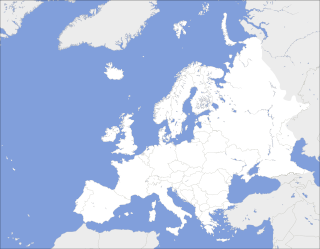Map
The map data are for the year 2014 from the World Bank. [1] Numbers are in percentage.
The map data are for the year 2014 from the World Bank. [1] Numbers are in percentage.
The table data are for the year 2017 from the World Bank. [2] Numbers are in percentage.
| Country | 2017 |
|---|---|
| | 17.4 |
| | 14.1 |
| | 16.7 |
| | 17.1 |
| | 14.7 |
| | 14.2 |
| | 14.7 |
| | 16.8 |
| | 15.4 |
| | 16.5 |
| | 16.4 |
| | 16.4 |
| | 18.1 |
| | 13.1 |
| | 14.2 |
| | 14.3 |
| | 20.1 |
| | 21.6 |
| | 13.5 |
| | 15.4 |
| | |
| | 14.8 |
| | 16.4 |
| 16.7 | |
| | 14.4 |
| | 18.1 |
| | 16.4 |
| | 17.8 |
| | 14.8 |
| | 13.6 |
| | 15.3 |
| | 17.6 |
| | 16.5 |
| | 15.0 |
| | 14.7 |
| | 17.5 |
| | 14.9 |
| | 25.0 |
| | 15.5 |
| | 17.7 |

Statistics Canada conducts a country-wide census that collects demographic data every five years on the first and sixth year of each decade. The 2016 Canadian Census enumerated a total population of 35,151,728, an increase of around 5.0 percent over the 2011 figure. Between 2011 and May 2016, Canada's population grew by 1.7 million people, with immigrants accounting for two-thirds of the increase. Between 1990 and 2008, the population increased by 5.6 million, equivalent to 20.4 percent overall growth. The main drivers of population growth are immigration and, to a lesser extent, natural growth.

The demographics of Nauru, an island country in the Pacific Ocean, are known through national censuses, which have been analysed by various statistical bureaus since the 1920s. The Nauru Bureau of Statistics have conducted this task since 1977—the first census since Nauru gained independence in 1968. The most recent census of Nauru was in 2011, when population had reached ten thousand. The population density is 478 inhabitants per square kilometre, and the overall life expectancy is 59.7 years. The population rose steadily from the 1960s until 2006 when the Government of Nauru repatriated thousands of Tuvaluan and I-Kiribati workers from the country. Since 1992, Nauru's birth rate has exceeded its death rate; the natural growth rate is positive. In terms of age structure, the population is dominated by the 15–64-year-old segment (65.6%). The median age of the population is 21.5, and the estimated gender ratio of the population is 0.91 males per one female.
The demography of Australia covers basic statistics, most populous cities, ethnicity and religion. The population of Australia is estimated to be 25,735,200 as of 22 January 2021. Australia is the 52nd most populous country in the world and the most populous Oceanian country. Its population is concentrated mainly in urban areas and is expected to exceed 28 million by 2030.

Government spending or expenditure includes all government consumption, investment, and transfer payments. In national income accounting, the acquisition by governments of goods and services for current use, to directly satisfy the individual or collective needs of the community, is classed as government final consumption expenditure. Government acquisition of goods and services intended to create future benefits, such as infrastructure investment or research spending, is classed as government investment. These two types of government spending, on final consumption and on gross capital formation, together constitute one of the major components of gross domestic product.
This is a list of lists of countries and territories by various criteria. A country or territory is a geographical area, either in the sense of nation or state.

Prevalence of tobacco use is reported by the World Health Organization (WHO), which focuses on cigarette smoking due to reported data limitations. Smoking has therefore been studied more extensively than any other form of consumption.
According to the World Bank income level classification, Portugal is considered to be a high income country. Its population was of 10,283,822 people, by 1 July 2019. WHO estimates that 21.7% of the population is 65 or more years of age (2018), a proportion that is higher than the estimates for the WHO European Region.
After a significant decline in earlier decades, crude birth rates in Armenia remained at a nearly-constant 13.0–14.2 per 1000 people in the years 1998–2015. In the same period, the crude death rate went from 8.6 to 9.3 per 1000 people. Note that crude rates are not age-adjusted. Life expectancy at birth at 74.8 years was the 4th highest among the post-USSR countries in 2014.

The map data is for year 2014 from the World Bank. Numbers are in percentage.

The map data is for year 2012 from the World Bank. Numbers are in kWh per year.
This is a list of total public and private health expenditure for European countries, divided by the population of the country to give expenditure per capita. It includes health services, family planning, nutrition activities, and emergency health aid.